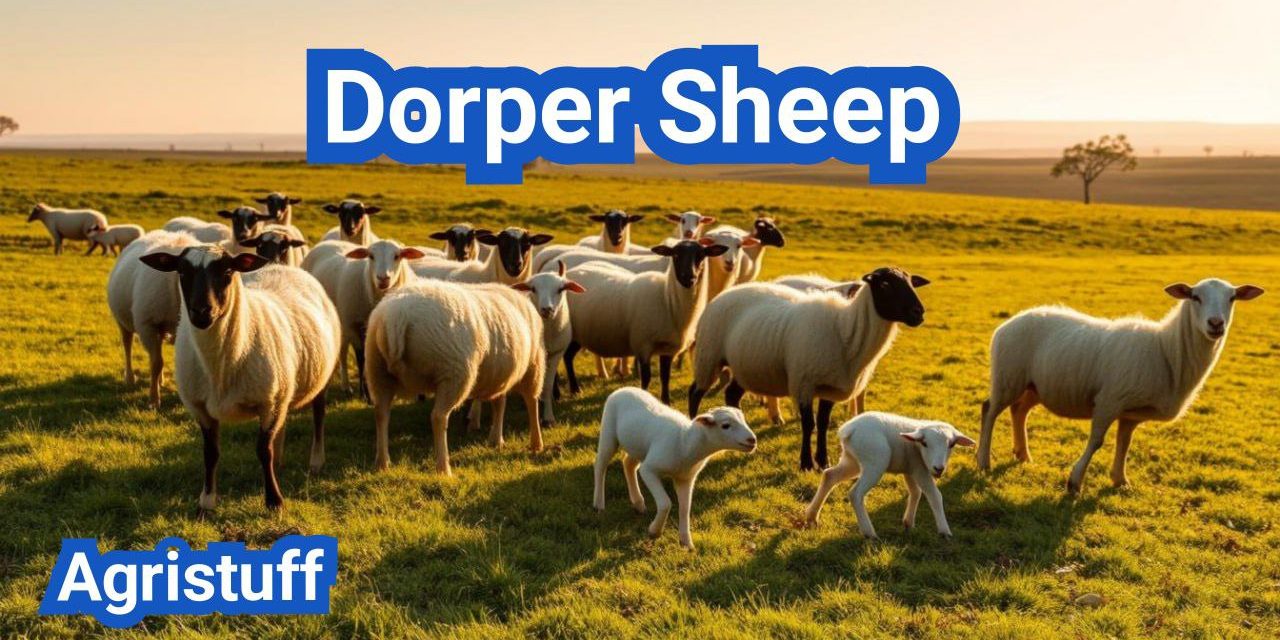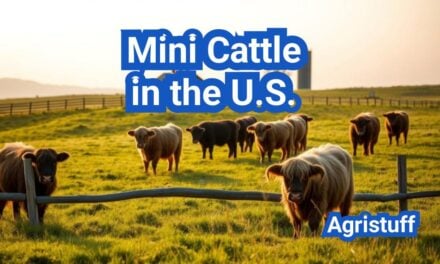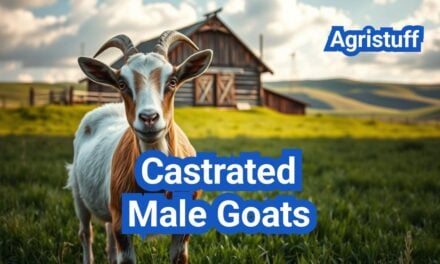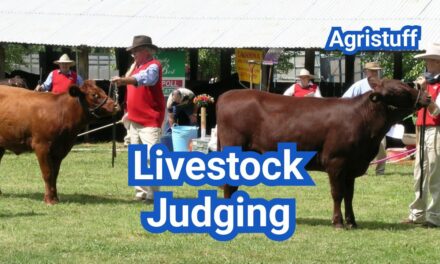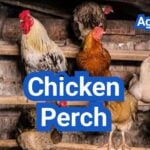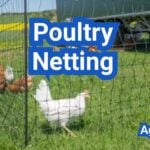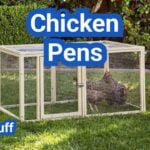The Dorper Sheep is a robust breed developed in South Africa, known for its hardiness and suitability for meat production. Originating from a cross between the Dorset Horn and Blackhead Persian sheep, this breed has gained popularity worldwide for its adaptability and fast growth rate.
This South African breed is renowned for its ability to thrive in various farming conditions, making it an ideal choice for farmers looking for a low-maintenance yet productive livestock option. Its hardiness and resistance to diseases are key characteristics that contribute to its success as a meat sheep breed.
Key Takeaways
- Developed in South Africa by crossing Dorset Horn and Blackhead Persian sheep.
- Known for hardiness and fast growth rate.
- Ideal for meat production due to its adaptability and low maintenance.
- Suitable for various farming conditions.
- Resistant to diseases, enhancing its productivity.
The Origin and History of Dorper Sheep
Developed in the 1930s, the Dorper sheep was bred for hardiness and adaptability in South Africa’s challenging agricultural environments. The breed was created by crossing the Dorset Horn and Blackhead Persian sheep, resulting in a robust and versatile animal.
Development in South Africa’s Karoo Region
The Karoo Region of South Africa played a crucial role in the development of the Dorper sheep. Its arid climate and vast expanses made it an ideal location for testing the breed’s hardiness and adaptability. The region’s harsh conditions necessitated the creation of a sheep breed that could thrive with minimal maintenance.
Breeding Purpose and Initial Goals
The primary goal of breeding Dorper sheep was to produce a hardy, fast-growing animal suitable for meat production in challenging environments. The initial breeding program focused on combining the desirable traits of the Dorset Horn and Blackhead Persian breeds, resulting in a sheep that was not only resilient but also productive.
The key characteristics of the Dorper breed include its ability to thrive in poor grazing conditions and its resistance to diseases and parasites. These traits made it an attractive option for farmers in South Africa and beyond.
Introduction to Global Markets
Following its successful development in South Africa, the Dorper sheep was introduced to various countries around the world. Its adaptability and hardiness made it a popular choice for farmers in diverse agricultural environments.
| Year | Event | Location |
|---|---|---|
| 1930s | Development of Dorper Sheep | South Africa |
| 1950s | Introduction to Global Markets | Various Countries |
| Present | Popular Breed for Meat Production | Global |
The global introduction of the Dorper sheep has been accompanied by its recognition as a premium breed for meat production. Its ability to grow quickly and thrive in challenging conditions has made it a favorite among farmers worldwide.
What Makes Dorper Sheep Unique

Characterized by their white and black heads, Dorper Sheep exhibit a mix of hair and wool, showcasing their unique genetic makeup.
Physical Appearance and Traits
Dorper Sheep are known for their distinctive appearance, which includes a white body and a black head, although some variations have a white head. Their coat is a combination of hair and wool, making them a hardy breed.
Size and Weight Specifications
Dorper Sheep are considered a medium to large breed. The following table provides an overview of their size and weight specifications:
| Category | Male | Female |
|---|---|---|
| Weight (lbs) | 180-230 | 130-180 |
| Height (inches) | 30-35 | 28-32 |
Hair Sheep Characteristics
As a hair sheep breed, Dorper Sheep have a coat that is more like hair than wool. This characteristic makes them well-suited to warmer climates and reduces the need for frequent shearing.
Key benefits of their hair sheep characteristics include:
- Heat tolerance
- Low maintenance grooming
- Resistance to external parasites
Adaptability to Harsh Environments
Dorper Sheep are highly adaptable to various environmental conditions, including harsh climates and poor pasture quality. Their hardiness makes them an ideal choice for farmers in challenging agricultural conditions.
Their adaptability is attributed to their:
- Robust constitution
- Ability to thrive on low-quality forage
- Resistance to diseases
Blackhead vs White Dorper: Comparing Varieties
The Dorper sheep breed is primarily represented by two distinct types: the Blackhead Dorper and the White Dorper. Both varieties share many characteristics that make Dorpers a popular choice among sheep farmers, but they also have some key differences.
Characteristics of Blackhead Dorper
The Blackhead Dorper is known for its distinctive black head and white body. This variety is often praised for its hardiness and adaptability to various climates. The black head is a defining characteristic, and it is a result of selective breeding. Blackhead Dorpers are known for their fast growth rate and high-quality meat production.
Characteristics of White Dorper
In contrast, the White Dorper has a completely white coat, including its head. This variety was developed to cater to markets where a white sheep is preferred. White Dorpers retain the same hardiness and meat production qualities as their Blackhead counterparts. The absence of pigment makes their carcasses more appealing to certain consumers.
Performance Differences
While both varieties share many performance attributes, there are some differences in their breeding and market preferences. Blackhead Dorpers have a slightly higher growth rate in some studies, but White Dorpers are preferred in markets that value white sheep for their appearance. Farmers should consider market demands when deciding between the two.
Choosing the Right Variety for Your Farm
When deciding between Blackhead and White Dorper, farmers should consider several factors, including climate adaptability, market demand, and personal preference. It’s essential to assess local market preferences and the specific needs of your farm. Both varieties offer excellent meat production qualities, so the choice often comes down to the specific requirements of your operation.
Benefits of Raising Dorper Sheep

Dorper Sheep offer numerous benefits to farmers, making them an attractive choice for livestock production. Their unique combination of hardiness, fast growth rate, and high-quality meat production makes them an ideal breed for many farming operations.
Superior Meat Production Qualities
Dorper Sheep are known for their superior meat production qualities. They have a fast growth rate, which allows them to reach market weight quickly. This breed is specifically designed for meat production, with a focus on producing high-quality carcasses with minimal fat.
Their meat is tender and flavorful, making it highly sought after by consumers. The ability to produce high-quality meat efficiently is a significant advantage for farmers looking to maximize their returns.
Low Maintenance Requirements
One of the key benefits of raising Dorper Sheep is their low maintenance requirements. They are hardy animals that can thrive in a variety of conditions, requiring less care and management compared to other breeds. This makes them an excellent choice for farmers who need to manage their resources effectively.
Dorper Sheep are resistant to many diseases and parasites, further reducing the need for extensive veterinary care. Their hardiness and adaptability make them well-suited to different farming environments.
Non-Seasonal Breeding Advantages
Dorper Sheep have the ability to breed non-seasonally, which means they can lamb throughout the year. This allows farmers to manage their production schedules more flexibly and take advantage of market opportunities as they arise.
Non-seasonal breeding also helps to distribute the workload more evenly throughout the year, reducing the pressure during peak lambing seasons. This can lead to more efficient farm management and better overall productivity.
Economic Returns for Farmers
The economic benefits of raising Dorper Sheep are significant. Their fast growth rate, high-quality meat, and low maintenance needs all contribute to higher economic returns for farmers. By producing high-quality meat efficiently, farmers can capitalize on premium market prices and improve their profitability.
Additionally, the ability to breed non-seasonally allows farmers to respond to market demands more effectively, further enhancing their economic prospects. Overall, Dorper Sheep offer a compelling option for farmers looking to improve their livestock production and increase their economic returns.
How to Start a Dorper Sheep Farm
Embarking on a Dorper Sheep farming journey necessitates a thorough understanding of the initial setup requirements. Starting a Dorper Sheep farm involves several critical steps, from land preparation to acquiring the necessary equipment.
Land Requirements and Stocking Rates
The amount of land required for a Dorper Sheep farm largely depends on factors such as pasture quality and the intended stocking rates. Generally, Dorper Sheep are known for their hardiness and ability to thrive on minimal forage.
According to the USDA guidelines, the stocking rate for sheep can vary significantly based on the region and pasture conditions. For instance, in areas with high-quality pasture, you might stock at a rate of 6-8 sheep per acre, while in poorer conditions, the rate could be as low as 2-3 sheep per acre.
| Pasture Quality | Sheep Per Acre |
|---|---|
| High | 6-8 |
| Medium | 4-6 |
| Low | 2-3 |
Determining Sheep Per Acre
Determining the optimal number of sheep per acre is crucial for maintaining pasture health and ensuring the well-being of your flock. Factors such as climate, soil type, and vegetation play a significant role in this determination.
“The key to successful sheep farming lies in understanding the delicate balance between stocking rates and pasture productivity.” –
Sheep Farming Expert
Shelter and Fencing Considerations
Adequate shelter and fencing are essential components of a Dorper Sheep farm. Sheep require protection from extreme weather conditions and predators.
Fencing should be sturdy enough to keep predators out and sheep in. A five-strand high-tensile wire fence is often recommended for sheep farms.
Essential Equipment and Supplies
To start a Dorper Sheep farm, you’ll need various pieces of equipment, including feeding troughs, watering systems, and handling facilities.
- Feeding troughs and supplemental feed
- Watering systems and storage tanks
- Handling facilities, such as chutes and sorting pens
- Health supplies, including vaccines and medications
By carefully planning and investing in the necessary infrastructure, you can establish a thriving Dorper Sheep farm that is both profitable and sustainable.
Step-by-Step Guide to Breeding Dorper Sheep

Effective breeding of Dorper Sheep hinges on selecting quality breeding stock and managing ewe fertility. Breeding Dorper Sheep is a nuanced process that requires a deep understanding of the breed’s characteristics and the factors that influence successful breeding programs.
Selecting Quality Breeding Stock
Selecting the right breeding stock is crucial for the success of any Dorper Sheep breeding program. Quality breeding stock should exhibit desirable traits such as high fertility, rapid growth rates, and resistance to diseases. When selecting breeding ewes, consider their reproductive history, maternal instincts, and overall health.
- Evaluate the ewe’s previous lambing records and fertility.
- Assess the ewe’s physical condition and overall health.
- Consider the genetic lineage and breeding history.
Understanding Dorper Ewe Fertility
Understanding the fertility of Dorper ewes is essential for maximizing breeding success. Dorper ewes are known for their high fertility rates, but factors such as nutrition, health, and management practices can significantly impact their reproductive performance.
Nutritional management plays a critical role in maintaining optimal ewe fertility. Ensuring that ewes receive adequate nutrition before and during the breeding season can enhance their reproductive efficiency.
Ram Selection and Management
The selection and management of rams are equally important in a Dorper Sheep breeding program. Rams should be chosen based on their genetic quality, fertility, and libido.
- Assess the ram’s breeding soundness and fertility.
- Evaluate the ram’s genetic background and breeding history.
- Ensure the ram is free from genetic disorders.
Implementing Effective Breeding Programs
Implementing an effective breeding program involves careful planning and monitoring. Farmers should establish clear breeding objectives, manage breeding cycles, and monitor reproductive performance.
A well-designed breeding program can enhance the overall productivity and profitability of a Dorper Sheep farm. By focusing on genetic improvement, reproductive efficiency, and overall flock health, farmers can achieve their breeding goals.
Lambing and Lamb Care Essentials

As lambing season approaches, farmers must prepare for the challenges and opportunities it brings. Effective lambing and lamb care are crucial for the success of sheep farming operations, particularly for breeds like the Dorper, known for their hardiness and meat production qualities.
Preparing for Lambing Season
Preparation is key to a successful lambing season. Farmers should ensure that their facilities are clean and ready for the newborn lambs. This includes providing adequate shelter, nutrition, and healthcare for the ewes. Proper nutrition is particularly important, as it directly impacts the health and viability of the lambs.
A well-planned lambing schedule is also essential. This involves monitoring the breeding dates and preparing for the expected lambing dates. Farmers should also have a plan in place for difficult births, including having a veterinarian on standby if necessary.
Assisting with Difficult Births
Despite the hardiness of Dorper sheep, difficult births can occur. Farmers should be prepared to assist with these births, knowing when to intervene and how to do so safely. Monitoring the ewes closely during lambing can help identify potential issues early.
In cases where assistance is needed, it’s crucial to follow proper procedures to minimize stress on the ewe and lamb. This may involve gently repositioning the lamb or seeking veterinary assistance.
Newborn Lamb Management
The care provided to newborn lambs is critical for their survival and growth. Ensuring that lambs receive colostrum within the first hour of birth is vital, as it provides essential antibodies. Farmers should also monitor lambs for signs of illness or distress, taking prompt action if necessary.
Newborn lamb management also includes ensuring that lambs are able to nurse properly and that the ewe is able to care for her lamb(s). In some cases, additional support may be needed, such as providing warmth or supplemental feeding.
Maximizing Dorper Lamb Growth Rates
Dorper lambs are known for their rapid growth, with average daily gains ranging from 160g to 203g under optimal conditions. To maximize growth rates, farmers should focus on providing optimal nutrition, including high-quality pasture and appropriate supplemental feeding.
| Nutritional Element | Importance for Lamb Growth | Recommended Provision |
|---|---|---|
| Protein | Essential for muscle development | High-quality pasture or protein supplements |
| Energy | Critical for overall growth and development | Adequate pasture or energy-rich supplements |
| Vitamins and Minerals | Important for overall health and immune function | Balanced mineral supplements |
By focusing on these key areas, farmers can help ensure that their Dorper lambs achieve their full growth potential, contributing to a successful and profitable sheep farming operation.
As the lambs grow, continued attention to their nutritional and healthcare needs is essential. Regular monitoring and adjustments to their care can help maximize their growth rates and overall health.
“The key to successful lambing is preparation and attention to detail. By ensuring that ewes are healthy and well-nourished, farmers can significantly improve lamb survival rates and overall flock productivity.”
Nutrition and Feeding Requirements

Understanding the nutritional requirements of Dorper Sheep is crucial for farmers aiming to maximize their flock’s potential. Dorper Sheep are known for their adaptability to various feeding conditions, but optimal nutrition is key to their health and productivity.
Pasture Management for Dorper Sheep
Effective pasture management is the foundation of a Dorper Sheep’s diet. These sheep are grazers and thrive on high-quality pasture. Ensuring adequate pasture availability and quality is essential. Rotational grazing can help maintain pasture health and reduce parasite loads.
Supplemental Feeding Guidelines
While pasture is the primary feed source, supplemental feeding may be necessary, especially during periods of low pasture quality or quantity. Energy and protein supplements can be provided to meet nutritional needs. The type and amount of supplement depend on factors like pasture quality, sheep age, and production stage.
Seasonal Feeding Adjustments
Dorper Sheep have different nutritional needs across seasons. For instance, during dry seasons, when pasture is scarce, additional feeding may be required. Conversely, during lush seasons, their diet may need adjustments to prevent over-nutrition.
Water Requirements and Management
Adequate water supply is critical for Dorper Sheep. They require access to clean, fresh water at all times. Water quality can significantly impact their health and productivity. Regular checks on water sources are necessary to ensure they are free from contamination.
In conclusion, managing the nutrition and feeding requirements of Dorper Sheep involves a comprehensive approach that includes effective pasture management, appropriate supplemental feeding, seasonal adjustments, and ensuring adequate water supply. By focusing on these aspects, farmers can enhance the health, productivity, and overall profitability of their Dorper Sheep flock.
Health Management and Disease Prevention

To ensure the optimal health of Dorper Sheep, farmers must implement comprehensive health management strategies. Dorper Sheep are generally hardy, but like all livestock, they require regular health checks, vaccinations, and parasite control measures to prevent disease and maintain productivity.
Common Health Issues in Dorper Sheep
Dorper Sheep are susceptible to certain health issues, including internal parasites, respiratory infections, and reproductive problems. Regular monitoring and preventive measures can help mitigate these risks. For instance, internal parasites can be controlled through strategic deworming programs.
Internal parasites are a significant concern, as they can lead to weight loss, reduced fertility, and decreased wool quality. Implementing a rotational grazing system can help reduce the parasite load.
Vaccination and Preventative Care Schedule
A well-planned vaccination schedule is crucial for preventing diseases in Dorper Sheep. Vaccinations against diseases such as Clostridial infections and Pasteurellosis are commonly recommended. Consult with a veterinarian to develop a vaccination program tailored to your farm’s specific needs.
“A comprehensive vaccination program is a cornerstone of effective health management in Dorper Sheep.” – Expert in Sheep Health Management
Parasite Control Strategies
Effective parasite control involves a combination of management practices and strategic use of antiparasitic drugs. Regular fecal egg counts can help monitor parasite loads, and selective deworming can reduce the development of drug resistance.
- Implement rotational grazing to reduce parasite loads.
- Conduct regular fecal egg counts to monitor parasite levels.
- Use antiparasitic drugs judiciously to avoid resistance.
Recognizing Signs of Illness
Early detection of illness is critical for effective treatment and minimizing losses. Farmers should be vigilant for signs of illness, such as changes in behavior, appetite, or physical condition. Regular health checks can help identify issues before they become severe.
Key signs of illness include lethargy, loss of appetite, labored breathing, and changes in fecal or urine output. Prompt veterinary consultation is essential for diagnosing and treating health issues effectively.
Successful Cross-Breeding with Dorpers

Dorper sheep, known for their hardiness and meat production qualities, are often used in cross-breeding programs to enhance these traits in other breeds. Cross-breeding with Dorpers can result in offspring that combine the desirable characteristics of both parent breeds, potentially leading to improved farm productivity and profitability.
Dorper-Katahdin Cross Benefits
The Dorper-Katahdin cross is particularly notable for its hardiness and parasite resistance. Katahdin sheep are known for their ability to thrive in various climates and their resistance to internal parasites, traits that complement the Dorper’s fast growth rate and meat quality.
Benefits of Dorper-Katahdin Cross:
- Improved hardiness and adaptability
- Enhanced parasite resistance
- Faster growth rates
- Better meat production qualities
Dorper-Merino Cross Performance
Cross-breeding Dorpers with Merino sheep can produce offspring with the fine wool characteristics of Merinos and the hardiness and meat production traits of Dorpers. This cross is beneficial for farmers looking to diversify their products.
| Trait | Dorper-Merino Cross | Purebred Dorper | Purebred Merino |
|---|---|---|---|
| Meat Production | High Quality | High Quality | Moderate |
| Wool Quality | Fine to Medium | Coarse | Fine |
| Hardiness | High | High | Moderate |
Other Profitable Cross-Breeding Combinations
Besides the Dorper-Katahdin and Dorper-Merino crosses, other combinations can be profitable depending on the farm’s specific needs and market demands. For example, crossing Dorpers with breeds known for their milking abilities can produce lambs with enhanced growth rates.
Maintaining Genetic Quality in Cross-Breeding
To maintain genetic quality in cross-breeding programs, it’s crucial to select high-quality breeding stock from both parent breeds. Regular monitoring of the offspring’s performance and genetic testing can help in making informed breeding decisions.
Marketing Dorper Sheep Products

Marketing Dorper Sheep products requires a comprehensive understanding of the target market and consumer preferences. To capitalize on the growing demand for premium meat and sheep products, farmers must adopt innovative marketing approaches.
Premium Meat Marketing Strategies
To market Dorper Sheep meat effectively, farmers should focus on its premium qualities, such as tenderness and flavor. Highlighting the breed’s characteristics can help differentiate their products in a competitive market.
Utilizing online platforms and social media can also help reach a wider audience. Creating engaging content that showcases the quality of Dorper Sheep meat can attract potential customers.
Cape Glovers Skin Value and Markets
Cape Glovers, the skins of Dorper Sheep, have significant value in the leather industry. Understanding the market demand for high-quality hides is crucial for maximizing returns.
Farmers can explore various sales channels, including direct sales to tanneries or leather manufacturers, to capitalize on the value of Cape Glovers.
Breeding Stock Sales Approaches
Selling breeding stock is a lucrative business for Dorper Sheep farmers. Showcasing the genetic superiority of their flock can attract potential buyers.
Participating in agricultural shows and sales events provides opportunities to network with other breeders and promote their stock.
Direct-to-Consumer Sales Options
Direct-to-consumer sales offer farmers a chance to increase their profit margins by eliminating intermediaries. Establishing an online presence or opening a farm shop can facilitate direct sales.
Building a loyal customer base through excellent customer service and quality products is key to successful direct-to-consumer sales.
| Marketing Channel | Potential Revenue | Target Audience |
|---|---|---|
| Online Sales | $10,000 | Health-conscious consumers |
| Farm Shop | $8,000 | Local customers |
| Agricultural Shows | $5,000 | Other breeders and farmers |
Overcoming Common Challenges in Dorper Farming

Dorper sheep farming presents several challenges that farmers must address to maintain a viable and profitable business. These challenges can range from managing predators and reproductive issues to handling market fluctuations and adapting to environmental challenges.
Managing Predator Threats
Predator management is a critical aspect of Dorper sheep farming. Common predators include coyotes, mountain lions, and bobcats. Effective management strategies include using guard animals such as donkeys or llamas, implementing fencing solutions like high-tensile fencing, and employing livestock guardian dogs.
According to a study on predator management, “the use of guard animals can reduce predator losses by up to 70%.” This highlights the importance of integrating such strategies into farming practices.
| Predator Management Strategy | Effectiveness | Cost |
|---|---|---|
| Guard Animals | High | Moderate |
| Fencing Solutions | Moderate | High |
| Livestock Guardian Dogs | High | Moderate to High |
Addressing Reproductive Issues
Reproductive issues can significantly impact the profitability of a Dorper sheep farm. Factors such as nutrition, genetics, and health management play crucial roles in the reproductive success of the flock. Ensuring ewes are well-nourished and selecting rams with proven fertility records are essential steps.
Nutritional Management: Providing a balanced diet that meets the nutritional needs of breeding ewes is critical. This includes ensuring adequate intake of proteins, vitamins, and minerals.
Handling Market Fluctuations
Market fluctuations can affect the profitability of Dorper sheep farming. Diversifying products, such as selling breeding stock or value-added products, can help mitigate these fluctuations. Additionally, staying informed about market trends and adjusting production accordingly can be beneficial.
“Diversification is key to managing market risks in sheep farming. By exploring different revenue streams, farmers can reduce their dependence on a single market.” – Agricultural Expert
Adapting to Environmental Challenges
Environmental challenges, including droughts and extreme weather conditions, can impact Dorper sheep farming. Implementing sustainable practices such as rotational grazing and maintaining adequate pasture health can help farms adapt to these challenges.
Rotational Grazing: This practice not only improves pasture health but also reduces the risk of overgrazing, thereby enhancing the overall resilience of the farm.
Is the Dorper Sheep Right for Your Farm?
Deciding to farm Dorper Sheep requires careful consideration of various factors, including farm conditions, market demand, and the farmer’s experience. The breed characteristics of Dorper Sheep, such as their hardiness and superior meat production qualities, make them an attractive choice for many farmers.
When evaluating Dorper Sheep suitability for your farm, consider the adaptability of the breed to harsh environments and their low maintenance requirements. The Dorper Sheep breed is well-suited for farms with challenging climate conditions, and their non-seasonal breeding advantages can provide a consistent supply of lambs to meet market demands.
Ultimately, the decision to farm Dorper Sheep should be based on a thorough assessment of your farm’s specific conditions and market opportunities. By understanding the breed characteristics and requirements, you can make an informed decision about whether Dorper Sheep are the right choice for your farm, aligning with your farming goals and market needs.
FAQ
What is the origin of Dorper Sheep?
Dorper Sheep originated in South Africa’s Karoo Region, developed for their hardiness and meat production qualities.
What are the main characteristics of Dorper Sheep?
Dorper Sheep are known for their hardiness, superior meat production, and low maintenance requirements. They are a hair sheep breed, adaptable to various environments.
What is the difference between Blackhead and White Dorper Sheep?
Blackhead Dorper Sheep have a black head, while White Dorper Sheep are entirely white. Both varieties share similar performance characteristics, but the choice between them depends on personal preference and market demand.
How many sheep can I graze per acre?
The number of sheep per acre depends on factors like pasture quality, climate, and management practices. Generally, 4-6 Dorper Sheep can be grazed per acre, but this can vary.
What are the benefits of raising Dorper Sheep?
Raising Dorper Sheep offers benefits like superior meat production, low maintenance, non-seasonal breeding, and potential economic returns.
How do I start a Dorper Sheep farm?
To start a Dorper Sheep farm, consider land requirements, stocking rates, shelter, fencing, and essential equipment. Research local regulations and market demand.
What are the key factors in breeding Dorper Sheep?
Selecting quality breeding stock, understanding ewe fertility, ram selection, and implementing effective breeding programs are crucial for successful Dorper Sheep breeding.
How do I care for newborn Dorper lambs?
Newborn lamb care involves ensuring proper nutrition, monitoring health, and providing adequate shelter. Assistance with difficult births is also crucial.
What are the nutritional requirements of Dorper Sheep?
Dorper Sheep require adequate pasture, supplemental feeding as needed, and access to clean water. Seasonal adjustments to their diet may be necessary.
How can I manage health issues in my Dorper Sheep flock?
Implementing a vaccination schedule, parasite control strategies, and recognizing signs of illness are essential for maintaining the health of your Dorper Sheep flock.
Can I cross-breed Dorper Sheep with other breeds?
Yes, cross-breeding Dorper Sheep with breeds like Katahdin or Merino can be profitable. Maintaining genetic quality is crucial in cross-breeding programs.
How can I market my Dorper Sheep products?
Marketing strategies for Dorper Sheep products include premium meat marketing, selling breeding stock, and direct-to-consumer sales. Identifying niche markets can be beneficial.
What are the common challenges in Dorper Sheep farming?
Common challenges include managing predators, addressing reproductive issues, handling market fluctuations, and adapting to environmental challenges.
Are Dorper Sheep suitable for my farm?
Dorper Sheep can be suitable for farms with suitable climate and management conditions. Consider factors like breed characteristics, market demand, and your farm’s resources.
Conclusion Of: Dorper Sheep | Hardy Meat Breed
The Dorper Sheep breed is a rugged, meat‑producing breed originally from South Africa. Developed in the 1930s, this resilient breed was created to thrive in dry, harsh climates while delivering fast‑growing, quality lamb for markets. As you’ll discover below, Dorper Sheep combine ease of care, strong maternal traits, and impressive meat performance—making them a top choice for farmers and ranchers alike.
(Source: American Dorper Sheep Breeders’ Society)
Origins and Breed Development
The roots of Dorper Sheep trace back to South Africa in the 1930s. The breed emerged from crossing Dorset Horn rams with Blackhead Persian ewes, aiming to produce a sheep that could withstand arid Karoo conditions yet yield superior lamb carcasses. The name “Dorper” combines the first syllables of Dorset and Persian.
(Source: South African Stud Book Association)
In 1950 the Dorper Sheep Breeders’ Society was established, standardizing breed traits and promoting growth. Two varieties—black‑headed Dorper and White Dorper (pure white)—emerged; by 1964 breeders unified under the single Dorper association, with differences remaining only in pigmentation.
(Source: Dorper Sheep Society of South Africa)
Key Physical Characteristics
Dorper Sheep are medium‑to‑large, stocky, muscular animals with strong legs and deep bodies—ideal for meat production. They typically weigh between 68–82 kg (ewes) and 90–125 kg (rams). Coat color varies between black‑headed and White Dorper types, both possessing short hair‑and‑wool coats that naturally shed in warm months, eliminating the need for shearing.
(Source: Oklahoma State University Breeds of Livestock)
A notable feature is their thick, supple hides, often marketed globally as “Cape Glovers,” which can contribute up to 20 % of carcass value. Their hardy coats, combined with sturdy builds, allow Dorper Sheep to endure temperature extremes, insect exposure, and wind with minimal human intervention.
(Source: USDA Livestock Production Guidelines)
Climate Adaptability and Hardiness
The defining trait of Dorper Sheep is their extraordinary adaptability. Developed for arid Karoo environments, they now thrive across diverse global climates—arid deserts, temperate zones, and even wet regions like Tasmania.
(Source: Texas A&M AgriLife Extension)
Their resilience extends to feed efficiency: Dorper Sheep are non‑selective grazers, thriving on coarse forage, low‑quality grasses, and crop residues. They also display strong heat tolerance and insect resistance, inherited from the hardy Blackhead Persian lineage.
(Source: University of California Small Ruminant Research)
Reproductive and Maternal Strengths
Dorper Sheep are renowned for reproductive efficiency and maternal instincts. Their breeding season is non‑seasonal or extended, allowing year‑round lambing cycles. Well‑managed flocks may yield three lamb crops in two years.
(Source: Penn State Extension Sheep Management)
Fertility rates are impressive—150 % lambing rates are common, with exceptional cases reaching 180 %. These ewes also exhibit strong mothering instincts and heavy lactation, resulting in high lamb survival.
(Source: National Sheep Improvement Program (NSIP))
Growth and Meat Production
Primarily bred for mutton, Dorper Sheep are recognized for rapid growth and excellent carcass quality. Lambs typically reach 36 kg (80 lb) live weight by 3–4 months, producing carcasses around 16 kg (35‑40 lb).
(Source: American Sheep Industry Association)
Average daily weight gains vary: 81–91 g in extensive systems, up to 160 g in structured growth tests, and 203 g in intensive conditions. Dressing percentages are high (50–59 %), indicating efficient feed‐to‐meat conversion.
(Source: Meat & Livestock Australia (MLA))
Ease of Management and Health
Caring for Dorper Sheep demands minimal labor. Their natural coat shedding removes the need for shearing, crutching, or mulesing. Their thick hides offer protection from elements and parasites. Dorper Sheep exhibit strong parasite resistance, often outcompeting wool breeds in low‑input systems.
(Source: University of Maryland Small Ruminant Program)
For small‑scale farmers or homesteaders, Dorper Sheep offer ideal conditions: docile temperament, manageable size, and rich meat, with no need for specialized wool skill sets.
(Source: Sustainable Agriculture Research & Education (SARE))
Global Spread and Breed Popularity
Though South Africa remains the largest Dorper base—including over five million head historically—the breed has seen explosive global growth. Dorper Sheep now flourish in the USA, Canada, Australia, China, Mexico, South America, Middle East, and beyond.
(Source: Food and Agriculture Organization (FAO))
In the U.S., the American Dorper Sheep Breeders’ Society fosters education, shows, and breeding initiatives to improve meat quality and hardiness. As a terminal sire, Dorper genetics enhance cross‑bred lamb output, adding muscularity and growth efficiency.
(Source: American Dorper Sheep Breeders’ Society)
Economic Value for Farmers
For U.S. producers, Dorper Sheep deliver significant advantages: High lamb output, superior feed conversion, labor efficiency, and crossbreeding benefits. Their profitability stems from consistent performance under variable conditions.
(Source: USDA Economic Research Service – Livestock)
Integrating Dorper Sheep into Farms
Farmers adopting Dorper Sheep should evaluate climate match, nutrition programs, pasture management, and health protocols. With careful planning, they can form a low-input, high-output cornerstone of meat sheep operations.
(Source: National Center for Appropriate Technology (NCAT) Sheep Production Guide)
Comparing Dorper Sheep with Other Breeds
Compared to wool breeds like Merinos, Dorpers stand out for faster growth, heat tolerance, and carcass yield. Against other hair sheep, they often surpass in growth and lamb quality.
(Source: University of Wisconsin-Madison Sheep Breed Comparison)
Common Challenges with Dorper Sheep
Cold sensitivity, fat deposition in grain-fed lambs, and market readiness are potential challenges. Genetic oversight is critical to avoid inbreeding.
(Source: Michigan State University Extension – Sheep Management)
Best Management Practices
Nutritional balance, rotational grazing, shelter access, and health vigilance ensure optimal Dorper Sheep performance. Genetic tracking through breed societies enhances long-term success.
(Source: Cornell University Sheep & Goat Program)
Sustainability and Future Potential
Dorper Sheep support sustainable agriculture by utilizing marginal lands, reducing labor costs, and integrating into diversified farming systems. Their adaptability aligns with climate resilience and grass-fed market demand.
(Source: Sustainable Agriculture Research & Education (SARE) Grass-Based Livestock)
Dorper Sheep in Sustainable Agriculture
Dorper Sheep are increasingly recognized for their role in regenerative farming systems. Their non-selective grazing habits improve pasture biodiversity, while their manure reduces reliance on synthetic fertilizers. Farms integrating Dorpers report enhanced soil health and reduced erosion, aligning with USDA conservation programs116.
Health Benefits of Dorper Lamb
Grass-fed Dorper lamb is rich in omega-3 fatty acids, CLA, and heme iron, offering cardiovascular and anti-inflammatory benefits. Studies link its nutrient profile to reduced anemia risk and improved immune function, making it a premium choice for health-conscious consumers13.
Global Expansion and Genetic Impact
From South Africa to Australia and the U.S., Dorpers have transformed meat sheep industries. In Australia, they now thrive in diverse climates, from arid zones to Tasmania’s wet winters, proving their genetic versatility107. Crossbreeding with Merinos and Van Rooy sheep has further enhanced hardiness and carcass quality4.
Challenges in Cold Climates
While Dorpers excel in heat, their short hair coats necessitate shelter in colder U.S. regions (e.g., Northeast or Midwest). Farmers in these areas often use rotational grazing with windbreaks or barn lambing to mitigate cold stress78.
Market Trends and Consumer Demand
U.S. demand for grass-fed lamb has surged, with Dorpers meeting preferences for lean, tender meat. Processors favor their high dressing percentages (50–59%), and hides (“Cape Glovers”) add 20% to carcass value, boosting farm profitability213.
Training and Resources for Farmers
Organizations like the American Dorper Sheep Breeders’ Society offer workshops on flock management, parasite resistance, and genetic selection. Online resources, such as Cornell’s small farms program, provide guides on pasture optimization for Dorpers26.
Final Thought
Dorper Sheep represent an ideal balance of hardiness, fertility, and meat quality. As a low-maintenance, high-yield breed, they align with modern sustainable husbandry practices in the U.S.
(Source: American Sheep Industry Association – Breed Selection)

